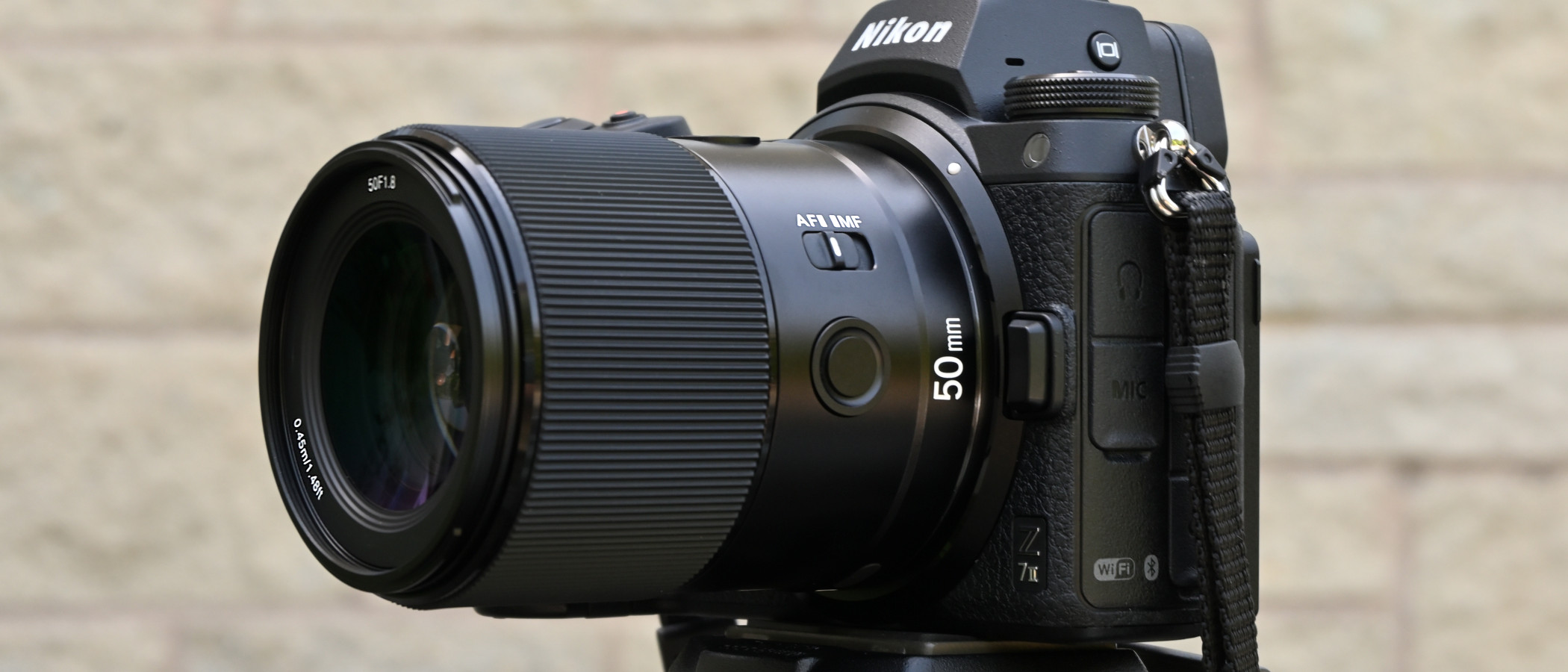Digital Camera World Verdict
Standard prime lenses aren’t exactly ten a penny but there are plenty of inexpensive options, including the Canon RF 50mm f/1.8 STM, Sony FE 50mm f/1.8 and the slightly shorter Nikon Z 40mm f/2. This Yongnuo lens is a little pricier but has better build quality, more exotic handling and delivers excellent all-round performance and image quality. Bokeh could be a little smoother but, overall, it’s a great buy for both full-frame and APS-C format Nikon and Sony mirrorless cameras.
Pros
- +
Dual function buttons
- +
Weather-sealed mount
- +
USB port for firmware updates
Cons
- -
Bokeh could be smoother
- -
Some lateral chromatic aberration
Why you can trust Digital Camera World
Currently available in Nikon Z and Sony E mount options, the Yongnuo YN50mm F1.8Z DF DSM bridges the gap between cheap, plastic lenses and more exotic fare. Despite being fairly inexpensive, it has robust build quality and smart handling extras, and feels a high-quality item in the hand. Its classic 50mm focal length makes it perfect as a standard prime for full-frame cameras, for everything from everyday shooting to portraiture, and it’s even better suited to the latter when mounted on an APS-C format body, giving an effective focal length of 75mm.
Read more:
The best Nikon Z lenses
The best Sony lenses
Specifications
Mount: Nikon Z (FX), Sony E (FE)
Full-frame: Yes
Autofocus: Yes
Stabilization: No
Lens construction: 11 elements in 8 groups
Angle of view: 47.8 degrees
Diaphragm blades: 9
Minimum aperture: f/16
Minimum focusing distance: 0.45m
Maximum magnification ratio: 0.15x
Filter size: 58mm
Dimensions: 68x87mm
Weight: 417g
Key features
Key features include a 50mm focal length and f/1.8 aperture rating. This classic combination enables faster shutter speeds and a tighter depth of field than when using the vast majority of standard zoom lenses, in a more compact and lightweight build than typical f/1.4 and f/1.2 primes.
The optical path is based on 11 elements in 8 groups and includes one aspherical element and one low dispersion element. The aperture diaphragm is well-rounded, based on 9 curved blades, whereas the sibling Yongnuo YN85mm F1.8Z DF DSM only has 7 blades. And whereas the 85mm lens has a customizable L-fn (Lens function) button, the 50mm has two, which we’ll come back to later.
Both of the 50mm and 85mm lenses include nano-structure multi-layer coatings to minimize ghosting and flare, and feature a USB-C port for the application of firmware updates. Autofocus is courtesy of a typically fast and virtually silent linear stepping motor.
Build and handling
Build quality feels reassuringly robust and the lens features a weather-seal gasket on its chrome-plated metal mounting plate. The electronic contacts for camera-lens data communication are gold-plated.
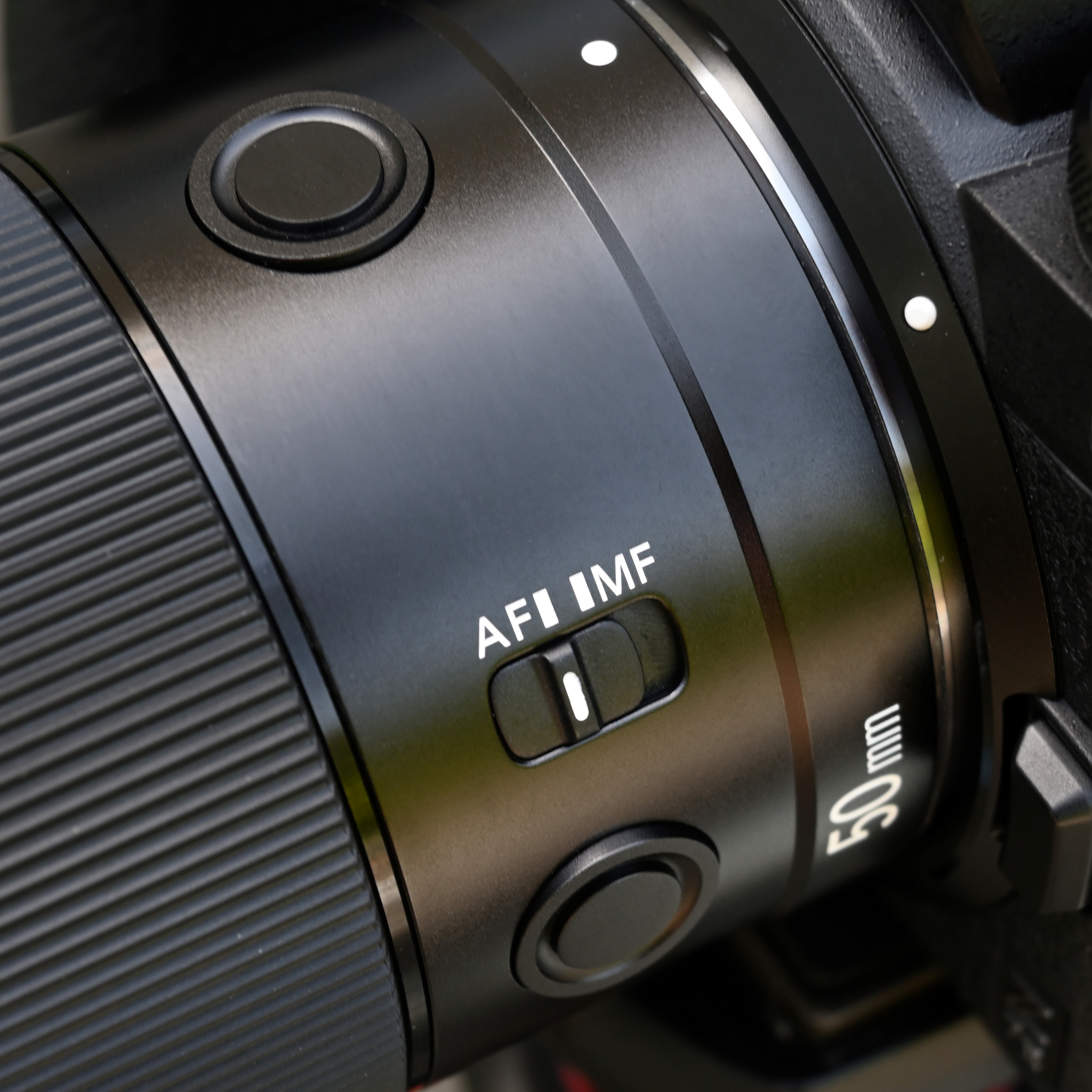
Handling is enhanced by the inclusion of two L-fn buttons. These can be customized via in-camera menus for various functions but are nominally for autofocus-hold. Unlike in some dual-button lenses, the buttons are wired in parallel and therefore duplicate the same function, so you can’t assign different functions to each one. Even so, it’s nice that they’re paired up, as it means selected function falls naturally under the thumb in both landscape and portrait orientation shooting.
Performance
Sharpness is very good indeed, even at f/1.8, the Yongnuo almost matching the much pricier Nikon Z 50mm f/1.8 S. Bokeh is a little fidgety even when shooting wide-open at f/1.8, and not the smoothest that we’ve seen from a 50mm f/1.8 lens, but it’s still pretty good and remains so when stopping down a little, helped by the well-rounded 9-blade aperture diaphragm.
Axial chromatic aberration is negligible, so there’s virtually no color fringing around high-contrast edges just in front of or behind the point of focus when shooting at wide apertures. Lateral chromatic aberration is more noticeable towards the edges and corners of the frame at apertures from f/1.8 through to f/5.6, but automatic in-camera correction is available in both Nikon and Sony bodies. The same goes for pincushion distortion, which can be a little noticeable when uncorrected.
Sample images
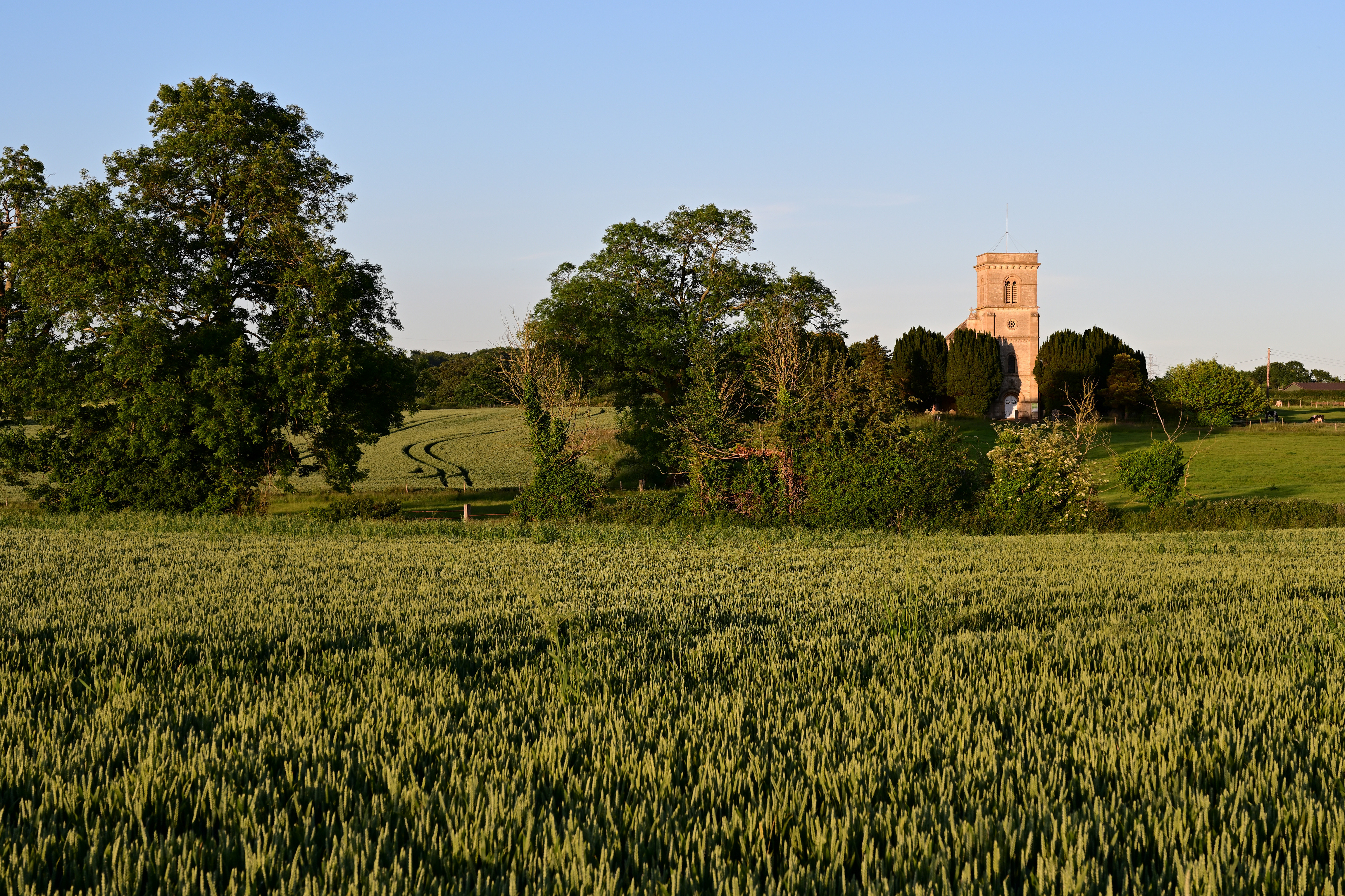
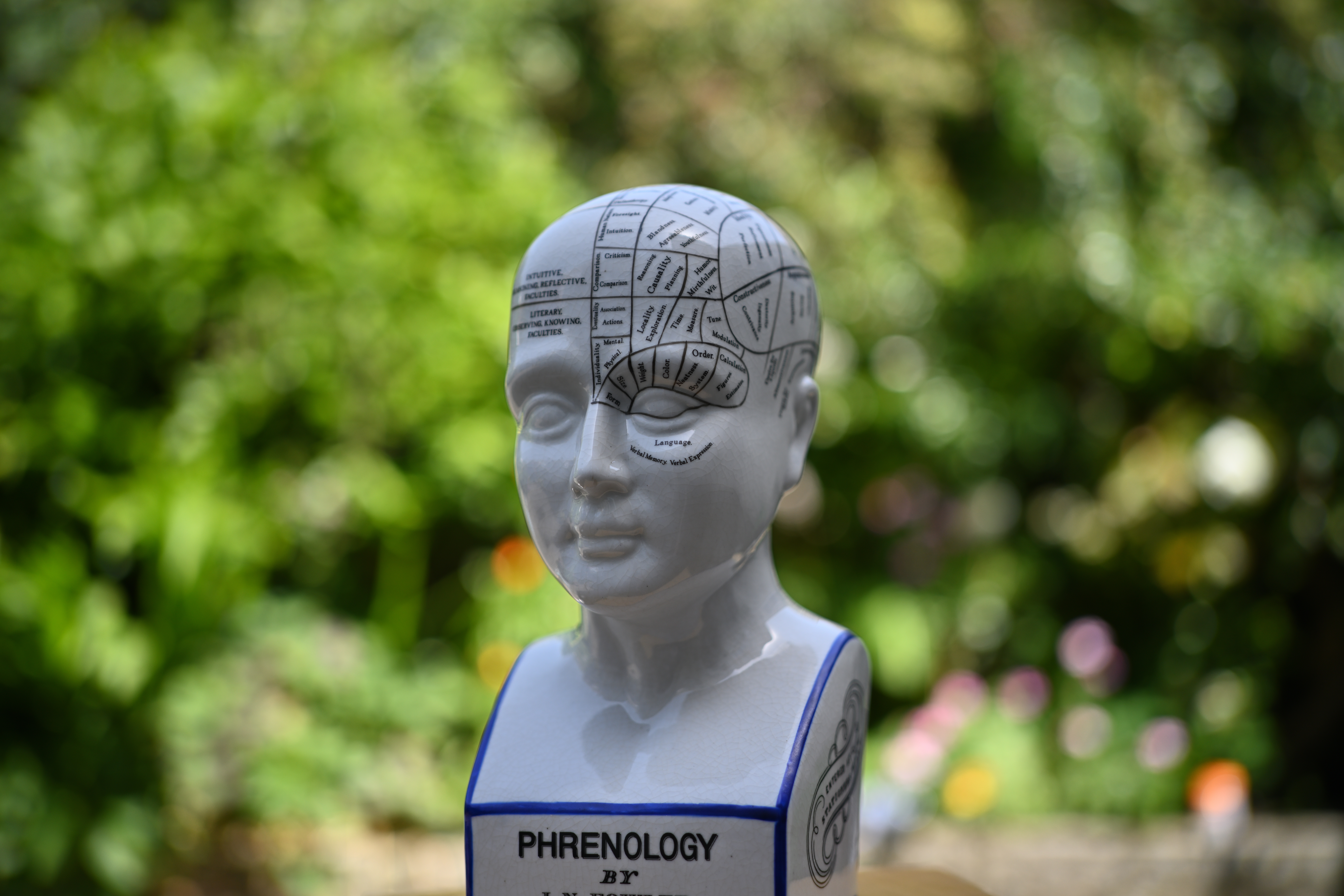

Lab results
We run a range of lab tests under controlled conditions, using the Imatest Master testing suite. Photos of test charts are taken across the range of apertures and zooms (where available), then analyzed for sharpness, distortion and chromatic aberrations.
We use Imatest SFR (spatial frequency response) charts and analysis software to plot lens resolution at the center of the image frame, corners and mid-point distances, across the range of aperture settings and, with zoom lenses, at four different focal lengths. The tests also measure distortion and color fringing (chromatic aberration).
Sharpness:
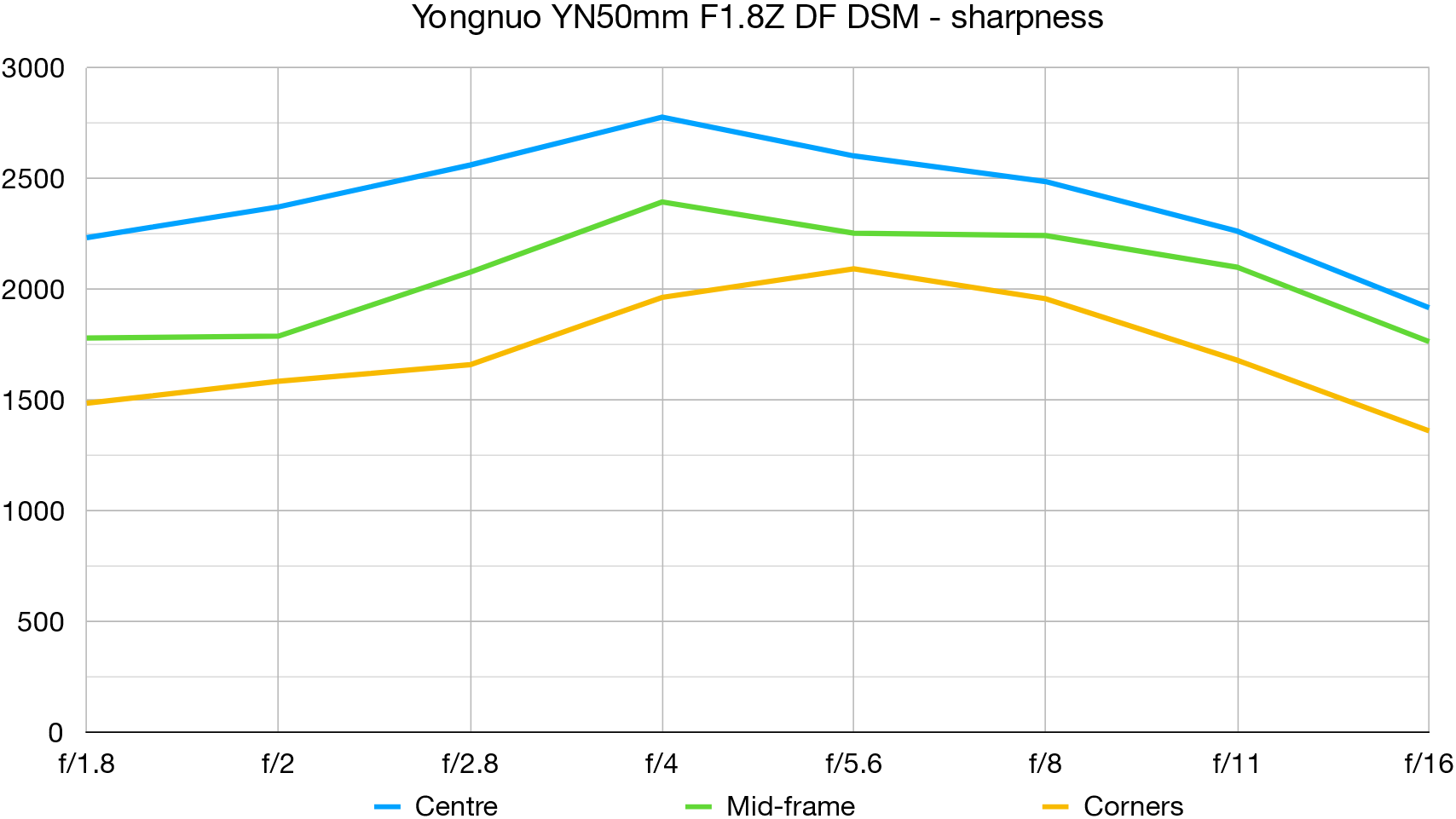
Levels of sharpness are very good, right across the whole image frame out to the edges and corners, as well as being impressively consistent throughout the entire aperture range.
Fringing:
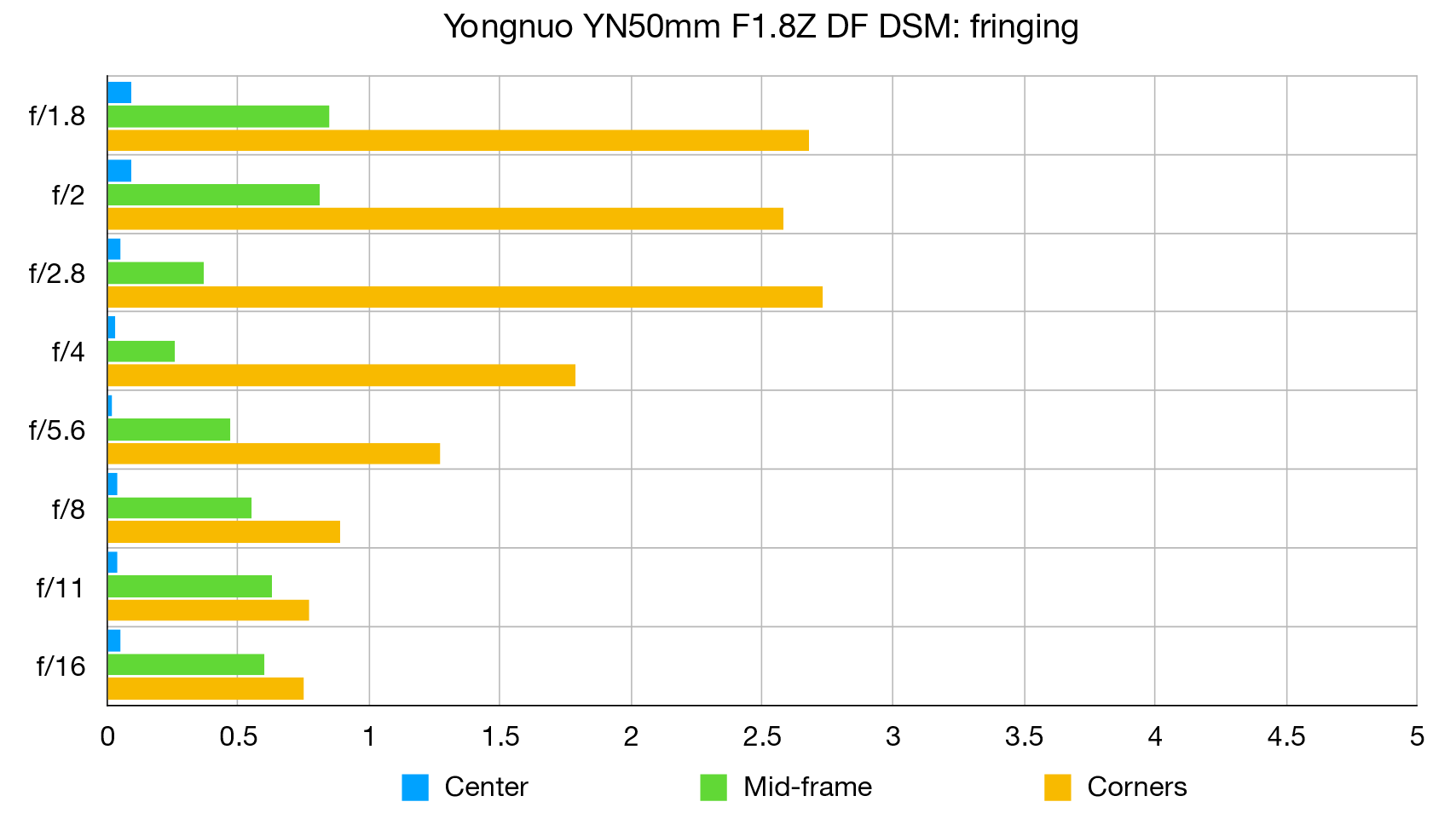
Axial chromatic aberration or ‘bokeh fringing’ is negligible but lateral chromatic aberration can be noticeable towards the corners of the frame, when uncorrected in-camera or at the raw processing stage. It’s worst at wide apertures, which is the opposite of the Yongnuo YN85mm F1.8Z DF DSM, which gives worse LCA performance at medium to narrow apertures.
Distortion: 1.46
There’s a little pincushion distortion of a very similar amount to that of the Yongnuo YN85mm F1.8Z DF DSM lens. As with lateral chromatic aberration, however, in-camera correction is available.
Verdict
Standard prime lenses aren’t exactly ten a penny but there are plenty of inexpensive options, including the Canon RF 50mm f/1.8 STM, Sony FE 50mm f/1.8 and the slightly shorter Nikon Z 40mm f/2. This Yongnuo lens is a little pricier but has better build quality, more exotic handling and delivers excellent all-round performance and image quality. Bokeh could be a little smoother but, overall, it’s a great buy for both full-frame and APS-C format Nikon and Sony mirrorless cameras.
Read more:
• Best camera lenses to get
• Best Canon lenses
• Best Nikon lenses
• Best Sony lenses
Matthew Richards is a photographer and journalist who has spent years using and reviewing all manner of photo gear. He is Digital Camera World's principal lens reviewer – and has tested more primes and zooms than most people have had hot dinners!
His expertise with equipment doesn’t end there, though. He is also an encyclopedia when it comes to all manner of cameras, camera holsters and bags, flashguns, tripods and heads, printers, papers and inks, and just about anything imaging-related.
In an earlier life he was a broadcast engineer at the BBC, as well as a former editor of PC Guide.
